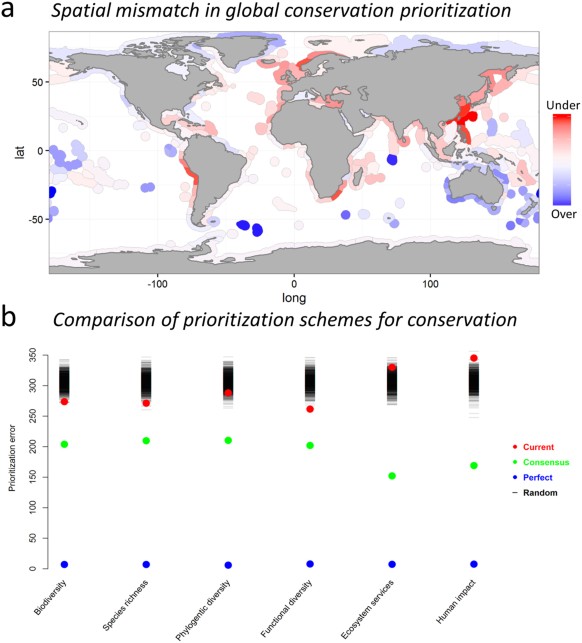
Abstract: "The global loss of biodiversity threatens unique biota and the functioning and services of ecosystems essential for human wellbeing. To safeguard biodiversity and ecosystem services, designating protected areas is crucial; yet the extent to which the existing placement of protection is aligned to meet these conservation priorities is questionable, especially in the oceans. Here we investigate and compare global patterns of multiple biodiversity components (taxonomic, phylogenetic and functional), ecosystem services and human impacts, with the coverage of marine protected areas across a nested spatial scale. We demonstrate a pronounced spatial mismatch between the existing degree of protection and all the conservation priorities above, highlighting that neither the world’s most diverse, nor the most productive ecosystems are currently the most protected ecosystems. Furthermore, we show that global patterns of biodiversity, ecosystem services and human impacts are poorly correlated, hence complicating the identification of generally applicable spatial prioritization schemes. However, a hypothetical “consensus approach” would have been able to address all these conservation priorities far more effectively than the existing degree of protection, which at best is only marginally better than a random expectation. Therefore, a holistic perspective is needed when designating an appropriate degree of protection of marine conservation priorities worldwide."
Read More: https://www.nature.com/articles/s41598-018-22419-1
No comments:
Post a Comment